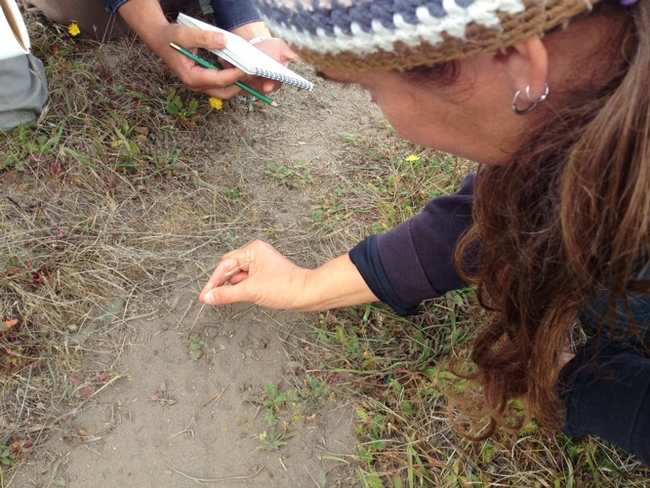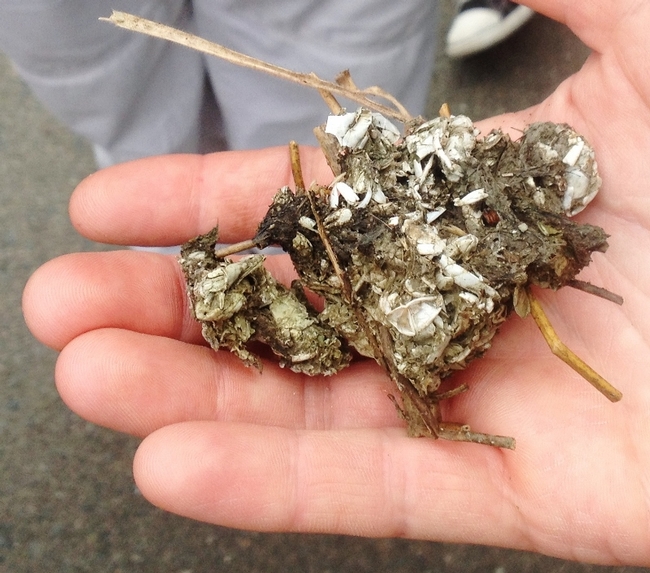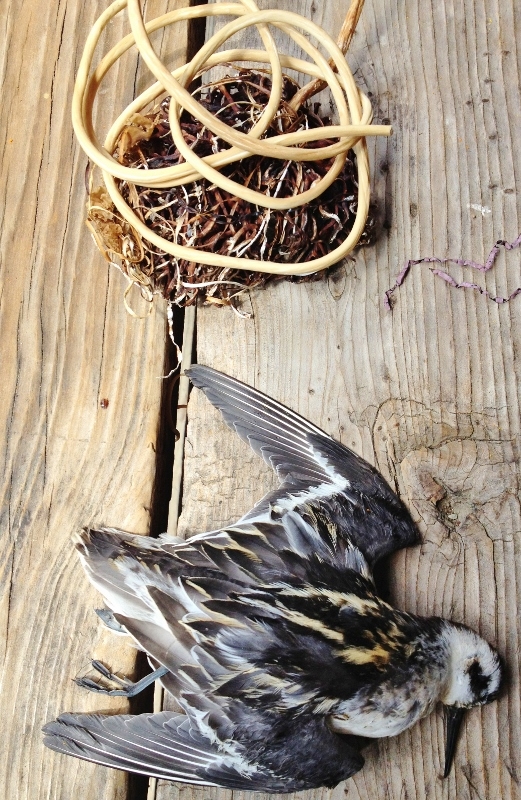On a recent misty coastal morning, a group of 25 adults formed a circle on the beach in front of the UC Davis Bodega Bay Marine Lab. We sat cross-legged with our field journals in our laps, toes digging into the cold damp sand and jackets zipped up tight to keep out the salty breeze.
Our circle was comprised of young and old, men and women, educators and students, budding and seasoned naturalists alike. We were all paying close attention to our UC California Naturalist instructor from Occidental Arts & Ecology Center who was unraveling the mysteries of animal tracks and sketching them for our benefit in a large field journal. She was setting the stage for our morning activity: to explore the sand dunes for animal sign. As we took copious notes, she described the wide diversity of animals that might use the rocky intertidal areas, sandy beaches, lagoon mudflats, tidal saltmarshes, sand dunes, coastal bluffs, coastal scrub, and freshwater wetland communities that occur in the near vicinity. She demonstrated how we could discern which was a front or hind foot track, left or right side, why and how one might determine what the animal was doing in that location, and more. She left some questions unanswered, encouraging us to explore, observe, draw, and discuss what we found. She told us to share our observations and piece together the stories, so off we eagerly hiked to explore animal sign.

As I chatted with California Naturalist Program Director Adina Merenlender, UC Cooperative Extension specialist in the Department of Environmental Science, Policy and Management at UC Berkeley, on the windy road back to Occidental, we came to the conclusion that not only had we immensely enjoyed a morning outside, recorded some amazing discoveries, and accomplished a site visit with a new partnering institution, we felt like we needed the time out in the nature.

Dr. Merenlender and I reaffirmed that time spent in nature as adults can also serve the dual purposes of educating and soothing maladies. Indeed, on this outing exploring the dunes we managed to learn about the local area while invigorating ourselves and alleviating the recent stress of rigorous professional and personal schedules!
Data from the first two years of UC California Naturalist Program evaluations support our theory that time in nature is productive and energizing for students.

California Naturalist Program staff and Directors firmly believe that formal classroom time paired with valuable time spent learning in nature allows this successful program to flourish and fosters a diverse community of naturalists that promote stewardship of California's natural resources.
